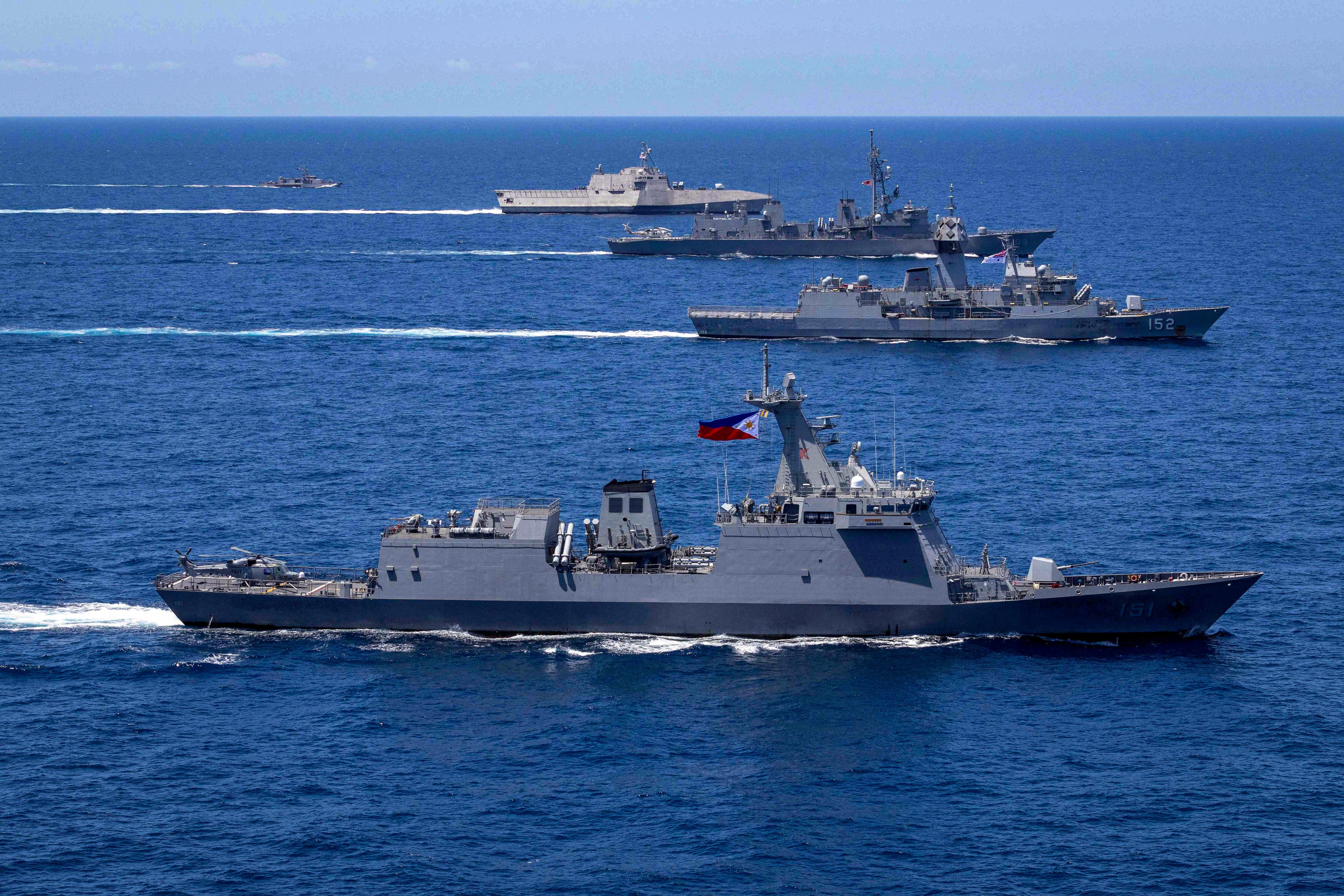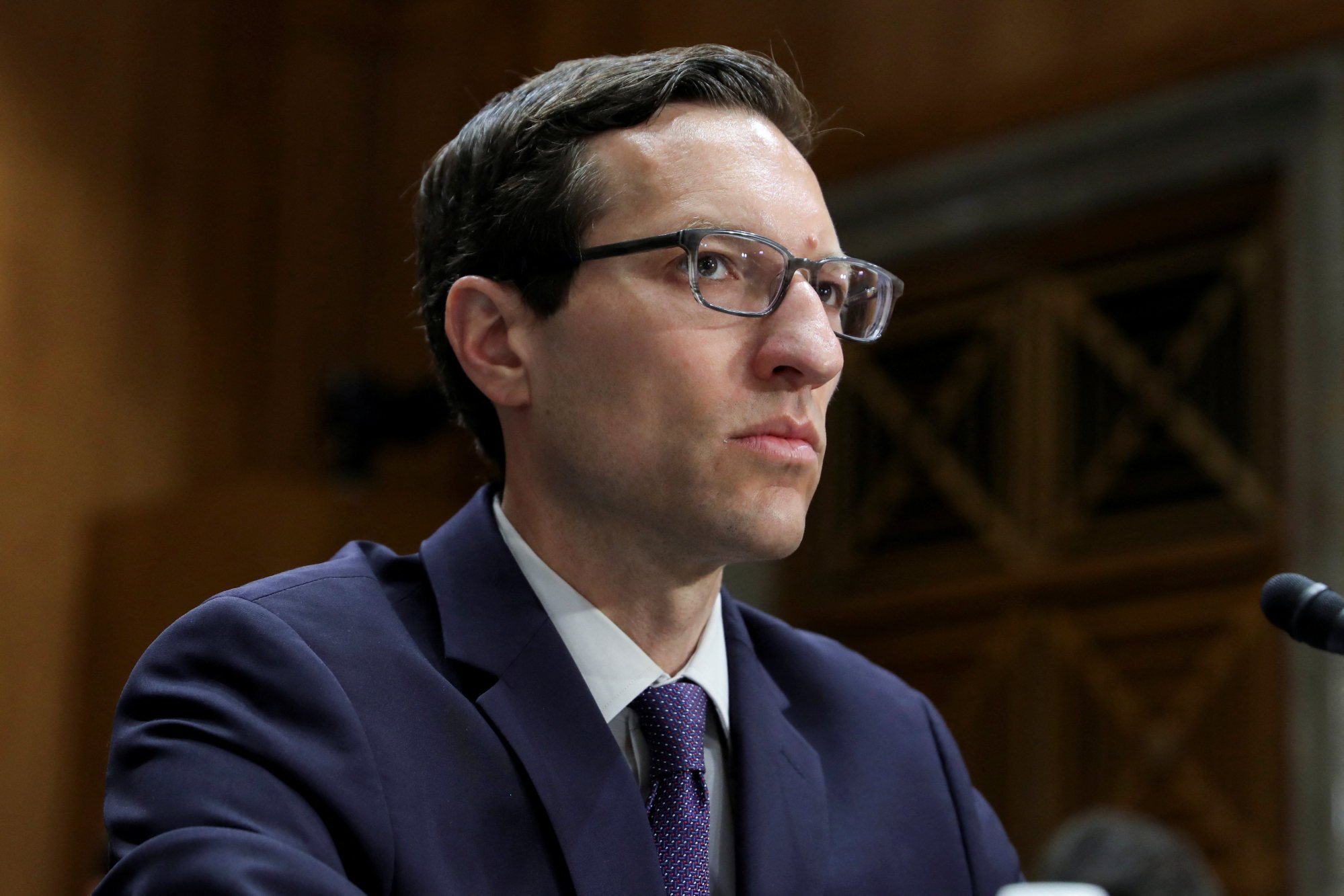‘Time has come’: ex-official urges US-Japan-Australia-Philippines defence pact
Former US defence official Ely Ratner says it’s time for the ‘viable and essential’ four-way defence pact. Security experts aren’t so sure

A former senior US official has called for a formal Pacific collective defence pact among the United States, Japan, Australia and the Philippines, framing it as a timely and necessary move to deter China’s military ambitions.
But analysts warn that the proposal could inflame regional tensions and would face complex political and diplomatic challenges.
Ely Ratner, who served as assistant secretary of defence for Indo-Pacific security affairs in former president Joe Biden’s administration, argued in a Foreign Affairs article published last week that Beijing was nearing the capability to reshape Asia by force.
“The time has come for the United States to build a collective defence pact in Asia,” he wrote. “For decades, such a pact was neither possible nor necessary. Today, in the face of a growing threat from China, it is both viable and essential.”
Beijing is intent on fulfilling President Xi Jinping’s vision of the “great rejuvenation of the Chinese nation”, according to Ratner – a project he says includes reunifying with Taiwan, dominating the South China Sea, and weakening US-led alliances to reshape the regional order.
“If it succeeds,” he wrote, “the result would be a China-led order that relegates the United States to the rank of a diminished continental power: less prosperous, less secure, and unable to fully access or lead the world’s most important markets and technologies.”
Speaking to This Week in Asia, Ratner said the US, Japan, Australia and the Philippines “are the four countries who are most aligned on the China challenge and are already deepening collective military cooperation in response”.

His proposal is similar in some ways to the Quadrilateral Security Dialogue, or Quad. This grouping, which is primarily diplomatic and does not constitute a formal defence pact, also counts among its members the US, Japan, Australia.
The defence ministers of those three countries held a meeting with their Philippine counterpart on the sidelines of the Shangri-La Dialogue in Singapore at the weekend. US Defence Secretary Pete Hegseth said there was “none closer than this group, none more strategically positioned to manifest deterrence, to bring about peace”.
Ratner stressed that his proposed pact would differ from the “Asian Nato” concept floated by Japanese Prime Minister Shigeru Ishiba last year, which drew little support from regional leaders.
Philippine Defence Secretary Gilberto Teodoro had also expressed scepticism about a regional defence alliance, arguing last year that “dichotomies and divergence in country interests” among Southeast Asian nations made it difficult to forge a unified military alliance. He instead urged the Association of Southeast Asian Nations to acknowledge that China was “overstepping” in the South China Sea.
Ratner pointed to three factors that he believes now make a smaller-scale collective defence pact viable – adding that he had deliberately avoided the term “Asian Nato”.
“First, US allies are more aligned than ever. Second, there is unprecedented cooperation among US allies. And third, there is an increasing demand for US allies to do more to contribute to peace and security. These trends all point in the direction of a collective defence pact,” he told This Week in Asia.
While he praised the Biden administration for taking “historic steps to link allies and partners together in new ways”, Ratner said current frameworks were too informal.
“A more formal mutual defence pact is necessary to deter the growing threat from China,” he said.

Practical challenges
Security experts caution that even Ratner’s more pragmatic version of a regional defence pact would face formidable hurdles.
Don McLain Gill, a geopolitical analyst and international relations lecturer at De La Salle University in Manila, said the proposal appeared more realistic than the “Asian Nato” concept, but added that it must “practical about the challenges”.
He cited earlier comments from Australian Prime Minister Anthony Albanese, who had downplayed Ishiba’s proposal, emphasising Canberra’s need to balance security concerns with economic ties to Beijing.
“ He made it clear that he does not want to reflect any form of containment-related agenda coming out of Australia,” Gill said.
“But then again, Australia recognises that a more assertive, expansionist, and belligerent China would definitely be of great insecurity to Australia and Australia’s national security. So that may eventually be a cause for the other members, the other three members, to sort of socialise the idea more to Australia to get it on board.”
Gill said that the four countries would need to clearly define the scope of any security arrangement, particularly if it involved Taiwan.
“Especially if the US and the Philippines get involved, that may eventually draw on responsibilities from Japan and Australia … I believe that being able to set the guidelines would be a prerequisite to the success of such a collective security arrangement,” he said.
Others cautioned that any move to formalise such a defence bloc would face strong opposition from China and stir discomfort among Southeast Asian nations.
The proposed grouping “won’t fly because the region is averse to collective defence pacts, seeing these as forcing states to align with certain great powers”, said Julio Amador, interim president of the Foundation for the National Interest in the Philippines and founder and trustee of the non-profit policy advisory firm FACTS Asia.
However, Amador acknowledged the Philippines’ strategic significance in any such pact, given its location and role in “standing up to China’s aggression”.
“The Philippines could gain from contributions to its military modernisation, more exercises, further integration into the US and alliance system,” he said.
“Nevertheless, the Philippines should carefully think if it’s prepared to handle the responsibility of being further enmeshed into other security flashpoints beside the South China Sea.”
Amador added that Manila’s neighbours “would certainly complain again that the Philippines is carrying water for Washington” if such a pact came to be, while Beijing would likely respond with accusations of regional destabilisation.
“It would be incumbent for the Philippines to carefully assess the costs and benefits of such a defence pact,” he said.